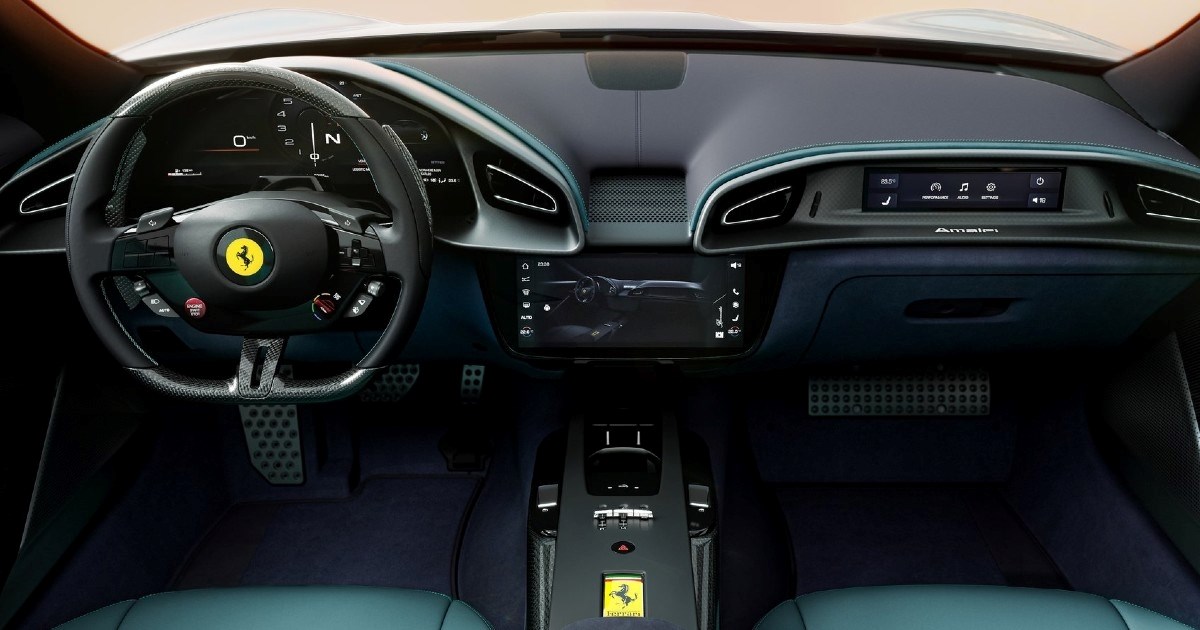Ferrari’s Touchscreen Fiasco: The Shocking Return to Physical Buttons!
When Ferrari unveiled the Amalfi, successor to the Rome, car enthusiasts rejoiced over the purebred V8 engine with electric assistance. But the real drama wasn’t under the hood — it was inside the cabin, specifically on the steering wheel. Ferrari has decided to ditch the touch-sensitive controls and bring back physical buttons after customers loudly complained about the impracticality and frustration of the touchscreen buttons.
What Went Wrong with Touch Controls?
Ferrari started experimenting with touch controls on the SF90 model, aiming to incorporate cutting-edge technology. The goal was to make the system as fast and intuitive as a smartphone. Spoiler alert: it didn’t work. Customers found the touch controls impractical and frustrating to use while driving, as they distracted attention and lacked functionality.
The Comeback of Physical Buttons
Enrico Galliera, Ferrari’s commercial director, confirmed that the Amalfi will be the first model to feature physical buttons on the steering wheel, and all future Ferraris will follow suit. Even better, existing models can be retrofitted — no need to replace the entire steering wheel, just the central part. This upgrade will be available at authorized dealers without sending the car back to Italy.
Did Ferrari Mess Up with Touch Controls?
Galliera admitted that while touch buttons were innovative, Ferrari didn’t fully consider how people actually use controls while driving. The goal was to keep hands on the wheel and eyes on the road, but that wasn’t achieved. Despite the criticism, Ferrari recorded a record sale of 13,000 cars, a 0.7% increase from the previous year. Demand is so high that new orders will only be fulfilled by 2025.
What Does This Mean for the Future of Luxury Cars?
This Ferrari saga shows that not everything digital and modern is better. Luxury car buyers want functionality and practicality, not just futuristic design. The return to physical buttons might be a sign that technology must serve the driver, not confuse or hinder them.
Conclusion
Ferrari listened to its customers and went back to basics — physical buttons on the steering wheel. Is this the start of a trend or just a brief episode? One thing’s for sure — drivers want to drive, not wrestle with screens and touch panels on the road.
If you’ve ever tried using touch controls while driving, you know what we mean. What do you think — are touch controls the future or just a hassle? Drop a comment, let’s see who’s for and who’s against!
Key Facts:
- Ferrari introduced touch controls with the SF90 model.
- Customers complained about impracticality and frustration.
- Amalfi is the first model with physical buttons; all future models will have them.
- Existing models can be retrofitted without replacing the entire steering wheel.
- Ferrari recorded record sales of 13,000 cars, a 0.7% increase.
- New orders will only be fulfilled by 2025.
If you’re a car lover or just enjoy some luxury drama, this story’s for you. Who knows, maybe other manufacturers will follow Ferrari’s lead and return to simplicity. Or we’ll all end up with screens on the wheel that annoy us while driving. What do you say?
Source: Index.hr, Autocar, Top Gear


























